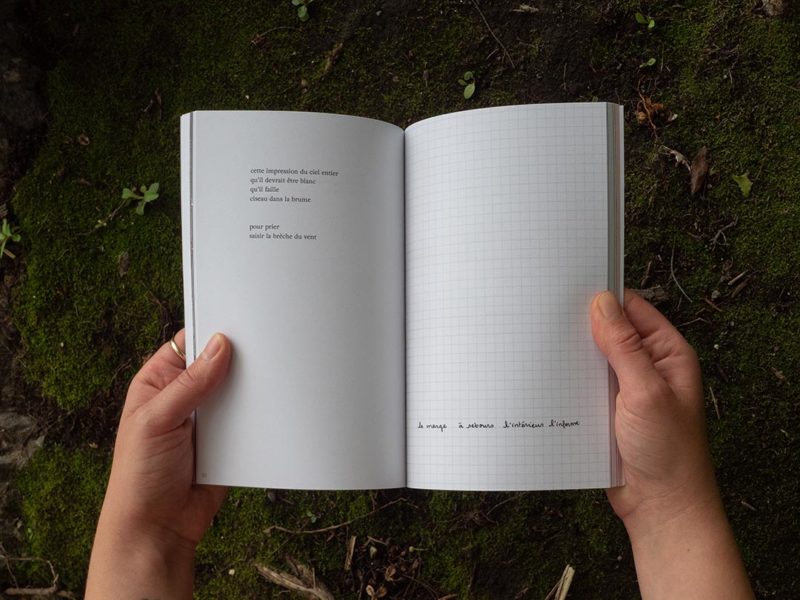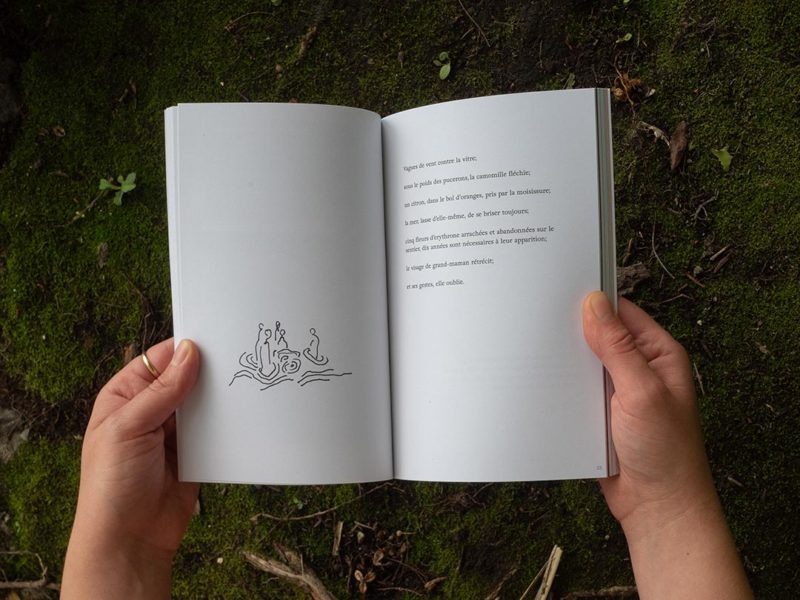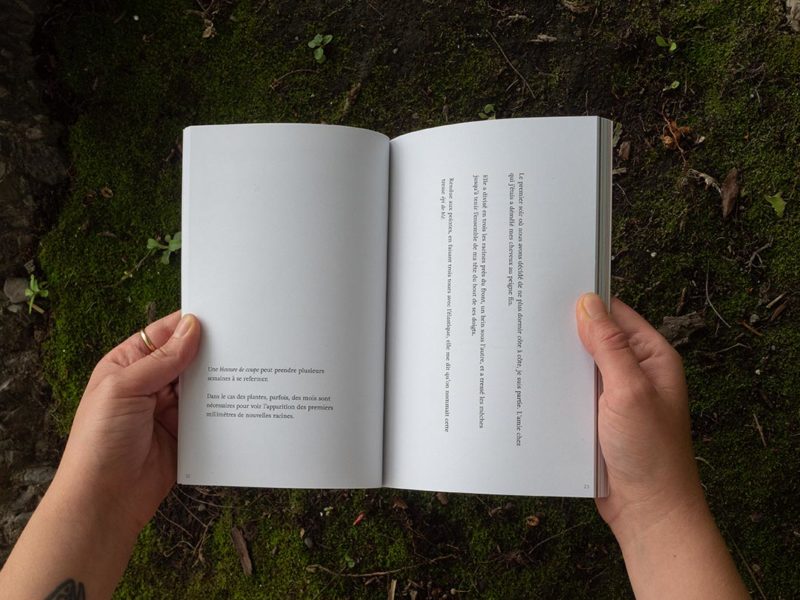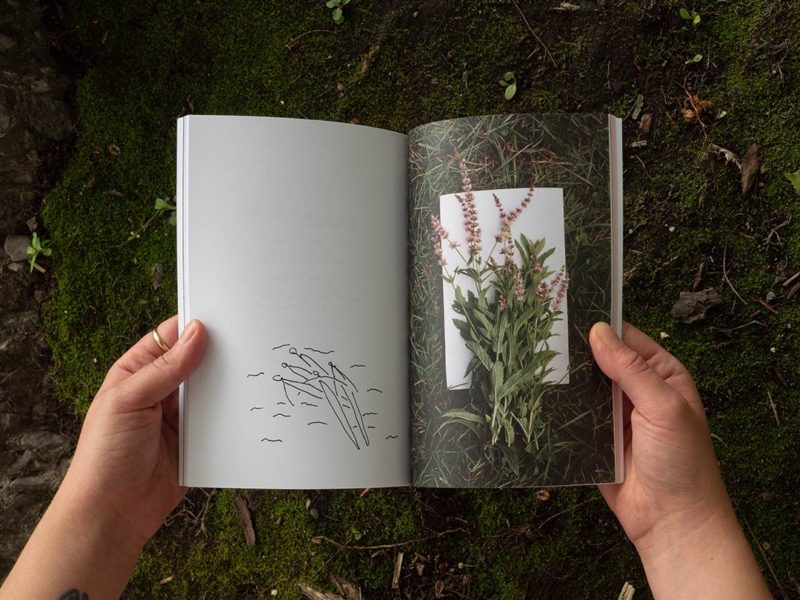[December 9, 2021]
By Louis Perreault
Artist Sarah Boutin’s Prendre fin1 isn’t, properly speaking, a photobook; it’s more like a creative journal or an artist book. In addition to presenting series of photographs, it contains screen captures showing various research images and drawings made by Boutin, as well as poetry and philosophical reflections. Her artistic approach is neither didactic nor in the form of a traditional creative memoir. In short, she recognizes that the raw material used in the research process typical of every artist has significant value in itself. Here, the very process acquires the status of artwork, and the questions she raises act as windows opening to images, metaphors, and symbols.
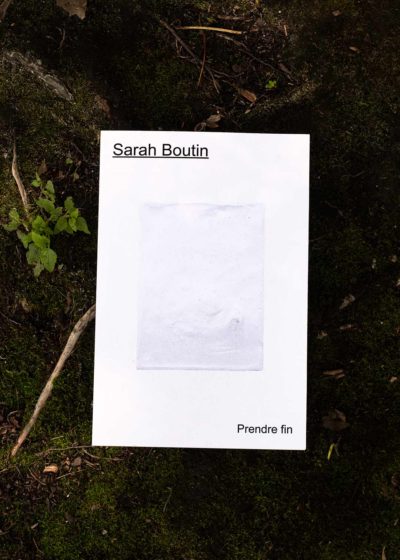
Going through the book from cover to cover, readers will come across a line of thought about discontinuity. “What naturally comes to an end?” Boutin wonders. Inspired by botany, by her relationships with close friends – she includes quotations from conversations with them – and by the continual flow of life, within which she observes the tiniest gaps and fractures, Boutin invites us to follow her observations and her creation, which she formulates in a simple, luminous, sensitive style. For example, she says, “In the process of making cuttings, it is by reconstructing missing organs that the shoot taken from the mother plant is likely to regenerate an entire plant.” So, she asks herself, “How can there be transmission from something that is over or omitted?” A romantic breakup, mourning, injuries that stop a process, and even haircuts are all things that offer an opportunity to recognize that interruption generates innovation and can therefore be a source of creation.
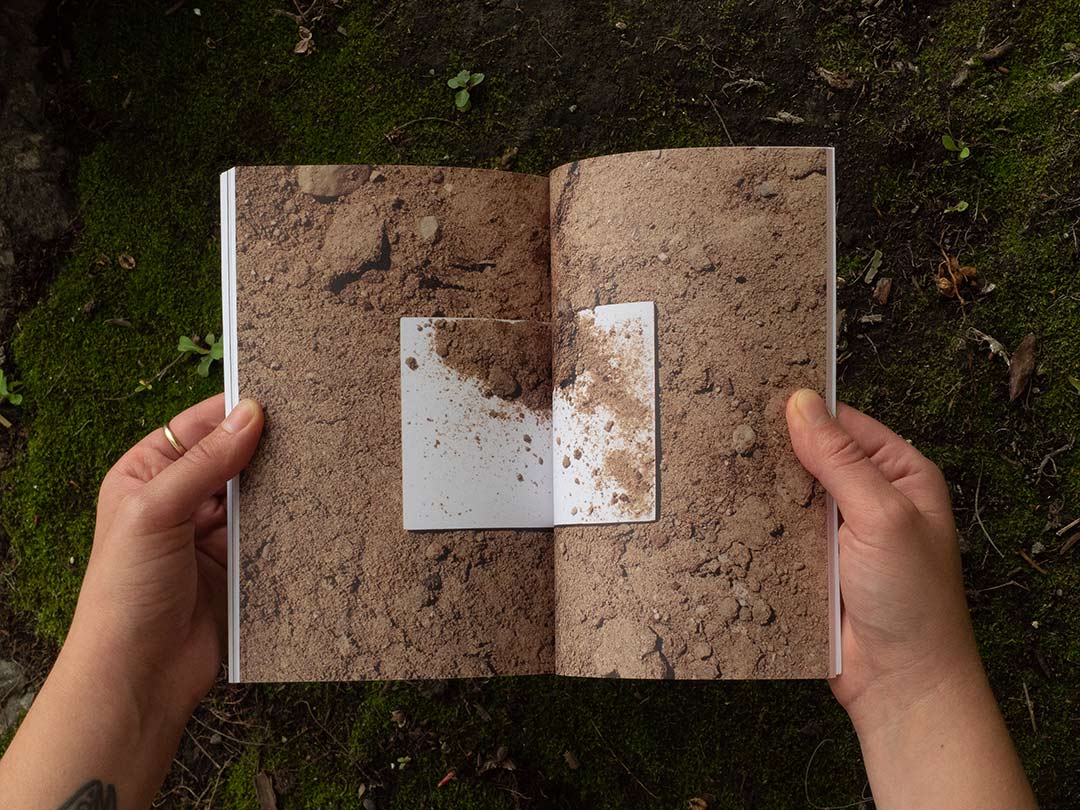
Although a few images punctuate the texts at the beginning of the book, it is halfway through that we encounter Boutin’s photographic work. First, a sort of package wrapped in a rag opens gradually over several pages, revealing immaculately white plaster plaques. The following photographs show this brilliant surface immersed in water or with different natural elements, such as sand and plants, placed on it. The plaques also become canvases on which nature deposits “that which dries, cracks, falls.” Through her writing and photographs, Boutin cultivates “an arrangement” that enables her to receive what, through rifts in the living, is dispersed under her attentive, curious, and – above all – available eyes. It’s a simple offering that proves rich and inspiring.
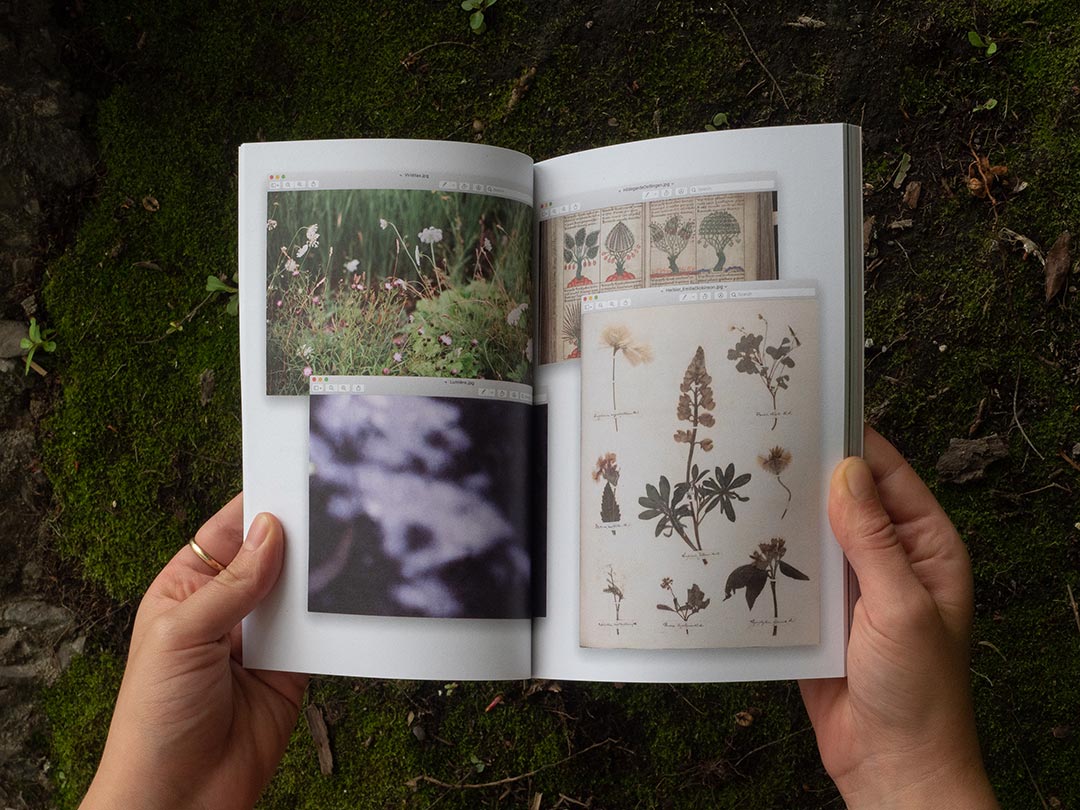
At the very end of the book, we find an interview with Boutin, intelligently conducted by Andy Maple, co-founder with artist Alex Pouliot of Pièce jointe, a new and highly promising publishing house. If Boutin’s research has been presented up to this point in an experimental and compartmentalized way, the interview offers a reflection that structures the impressions and fragments gathered by the reader in the preceding pages. Finally, we close the cover of Prendre fin with our mind nourished by the charm of Boutin’s creation, presented here not from the angle of the goal of the work but through the materiality and sensitivity that motivates all forms of research, experimentation, and attempts. Translated by Käthe Roth
Louis Perreault lives and works in Montreal. His practice is deployed within his personal photographic projects and in publishing projects to which he contributes through Éditions du Renard, which he founded in 2012. He teaches photography at Cégep André-Laurendeau and is a regular contributor to Ciel variable, for which he reviews recently published photobooks.

